


17
Most Celebrated
Occasions in America
We all know that the United States is a patchwork of cultures and the cradle of many fields. The beauty of our nation is grounded in the diversity of habits, lifestyles, and customs. All this confirms the uniqueness and complexity of the United States, hosting a multitude of festivals, parades, and events at the highest global level.
One of the most important dates for Americans is the fourth of July, an exclusive to our country holiday when all of us in a beautiful unity take it to the streets, gathering with friends and family to celebrate the mark of our freedom. Loud festivities, parades, and brilliant firework shows take place across the country.
With Christmas around the corner, let’s break down some of the most celebrated occasions in America.

1
New Year’s Eve
As in most countries in the world, the United States celebrates the first day of the new year on January 1st, according to the modern Gregorian calendar. At midnight, people gather outside for traditional firework shows to say goodbye to the previous year. Many cities across the country host grand public events, attracting thousands of people from all walks of life. This one evening of the year, we all become one, bidding farewell to the struggles and triumphs of the old year and welcoming new possibilities of the uncharted new year.
The social holiday established numerous national traditions. One of the most significant celebrations is held at New York’s Time Square - an event called ball drop. Since 1907, on December 31st, one minute before the clock announces the new year, a crystal ball with electric lights is slowly lowered off the pole. The festivities begin in the afternoon, where various star performances take place, and every year a person is selected to press the ball drop activation button. In previous years, some of the honored big names included Muhammad Ali, Cyndi Lauper, Bill and Hillary Clinton, and Lady Gaga, along with less known dignitaries, such as essay contest winners and high school teachers. Since 2010, the event is preceded by John Lennon’s “Imagine” - a timeless and universal piece of music that touches millions of hearts.
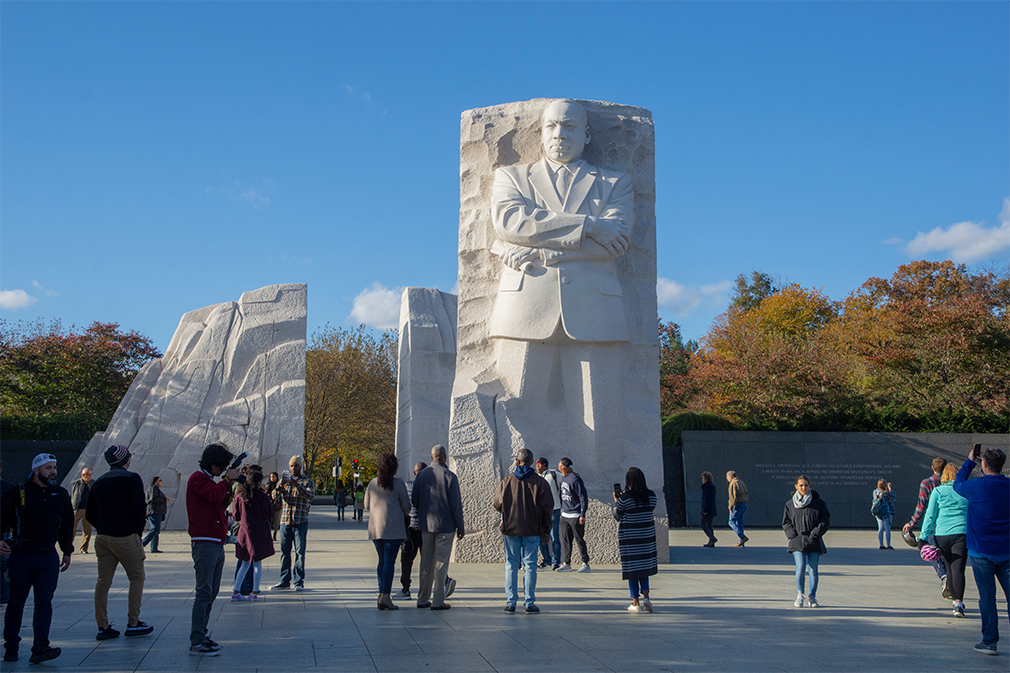
2
Martin Luther King Jr. Day
Martin Luther King Day is celebrated on the third Monday of January, around the birthday of our beloved Mr. King, which falls on January 15th. Martin Luther King was a civil rights activist for the African American community. In 1964, he was awarded the Nobel Peace Prize, four years before being assassinated on April 4, 1968. The holiday was established by President Ronald Reagan on November 2, 1983. In addition to Martin Luther King Day, there are only two federal holidays in the United States that commemorate historical figures - Columbus Day and Washington’s Birthday.
Many of the day’s events take place in Atlanta, Georgia, Martin Luther King’s hometown. The festivities include marches, parades, and charity runs, along with free admissions to some of the city’s museums.

3
Valentine’s Day
St. Valentine’s Day, a highly commercialized holiday, is celebrated all over the world on February 14th. St. Valentine was a Christian bishop and martyr. The tradition of celebrating Valentine’s Day in Western and Southern Europe dates back to the Middle Ages. In the United States, the holiday has been observed since the nineteenth century.
There are several theories about the origins of the holiday. Although the name undoubtedly derives from Saint Valentine, the same holiday probably refers to several traditions already known in ancient Rome, such as the custom of searching for the significant other by drawing his or her name from a specially designed urn. We can thank the British writer and poet, Sir Walter Scott, for spreading the love word about Valentine’s Day. England is also the country to send the very first Valentine’s Day card.
Today, the leading country to celebrate Valentine’s Day is, you guessed it, the United States. We do not spare expenses or skimp on resources to prove our unconditional and everlasting love. When it comes to gifts or romantic dinners, Americans don’t go cheap either. To give a beautiful ending to the eventful day, it is not uncommon to watch a marathon of romantic movies in the evening.
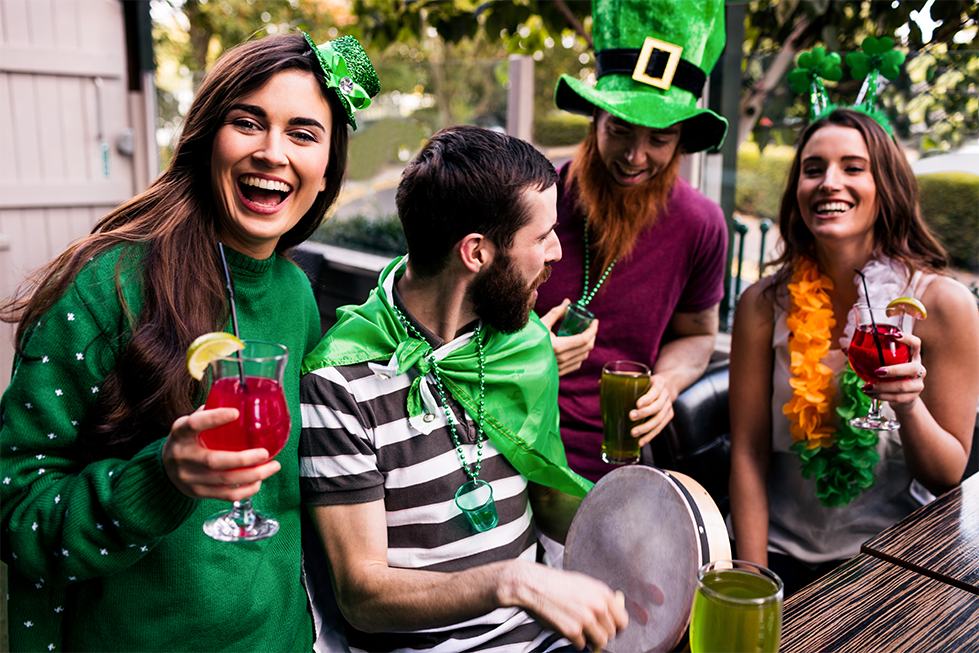
4
St. Patrick’s Day
The United States is also home to nearly 44 million people of Irish descent. St. Patrick is the patron saint of Ireland, and his holiday is celebrated on the day of his death - March 17th. Legend has it that St. Patrick used the clover, a symbol of Ireland, during the Christianization of the country to explain the concept of the Holy Trinity.
Americans like St. Patrick’s Day, and although it is not a day off from work like in the mother country, this social holiday is a great occasion to go out to numerous pubs where beer reigns, sometimes colored in green. And green dominates this day on the streets, in the wardrobe, or makeup. One of the highlights of St. Patrick’s Day is the green-dyed Chicago River and jubilant downtown parades.
In the USA, the celebration of St. Patrick’s Day dates back to 1737, when the Charitable Irish Society of Boston organized the first parade.
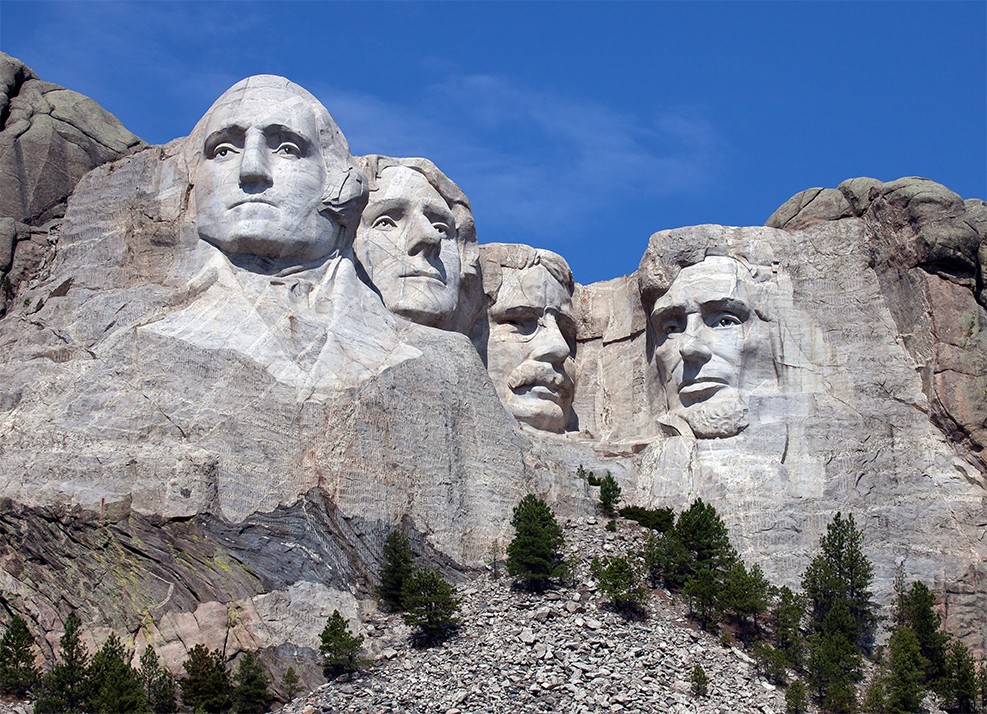
5
President’s Day
President’s Day is a holiday commemorating the birthday of George Washington - the first president of the United States. Celebrated on the third Monday of February, around Washington’s birthday, in some states, the holiday salutes all former presidents of the country.
Cherry pie is the traditional cake associated with President’s Day, and there is a historical meaning behind the symbolism related to George Washington’s childhood. Apparently, six-year-old Washington received a hatchet from his father and liked to shear everything he encountered. He began cutting the bark of the cherry tree in the garden until it finally withered away. When his father asked who cut the bark, Washington uttered the famous words, “I cannot tell a lie, you know I cannot tell a lie! I did cut it with my hatchet.” The honesty was rewarded by his father’s genuine embrace.

6
Easter
Easter is a Christian festivity that honors the resurrection of Jesus Christ. It is a moveable feast celebrated on the first Sunday after the full moon following the first day of spring. In the United States, Easter is not a public holiday, and because it falls on Sunday, most companies and stores may have shorter operating hours or be closed for the day.
Americans celebrate Easter with traditional egg-based dishes and decorations. Various communities organize an egg hunt, mostly for children’s entertainment. The egg hunt is a family game consisting of searching for eggs hidden by the Easter Bunny. It is not uncommon for the Easter Bunny to bring gifts as well.

7
April Fool's
April Fool’s Day is observed on April 1st. The United States celebrates April Fool’s Day by making various pranks of family and friends. Some companies and institutions also engage in a joke-filled atmosphere by providing false information to the public. In 1996, the Taco Bell restaurant chain announced that they had purchased the Liberty Bell, a symbol of US independence, and changed its name to Taco Liberty Bell.
It is difficult to pinpoint the exact date when the holiday came about as there are several different theories. One of them suggests that it dates back to the times of Emperor Constantine the Great. After the court jesters told the emperor that they would better rule the empire, Constantine agreed to have one of them named Kugel reign for one day. Kugel issues a decree that called for outrageous behavior. It has since become an annual tradition. Unfortunately, the above theory, proposed by professor Boskin of the University of Boston, turned out to be an April Fool’s joke itself. Professor confessed that he himself had invented the story about the emperor and his jesters.
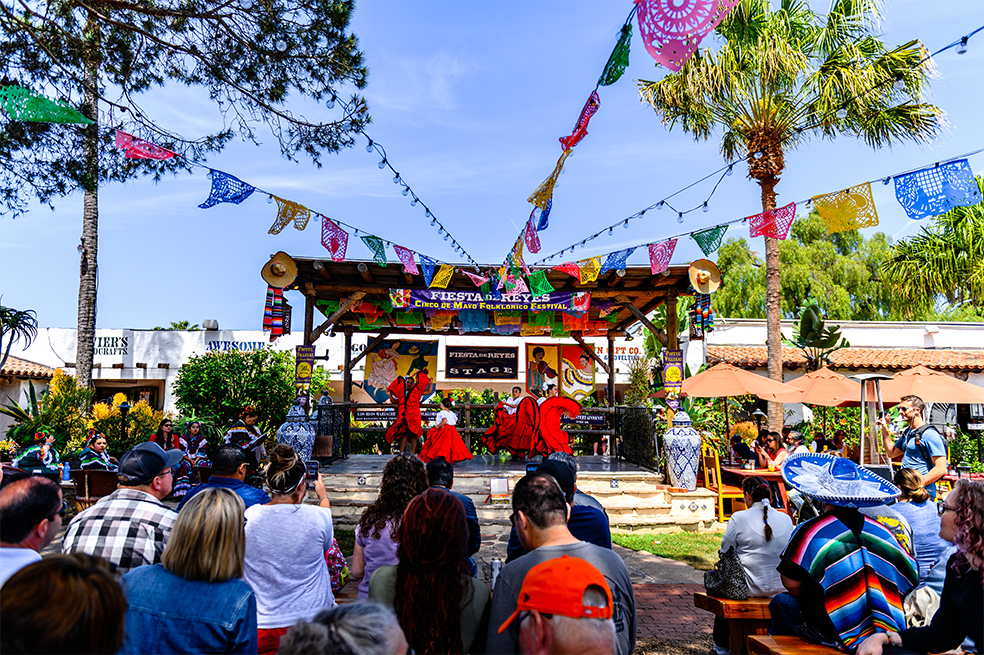
8
Cinco De Mayo
Cinco de Mayo, or May 5th, is a celebration of Mexican culture in the USA. Ironically, celebrating this holiday in the United States became more popular than in Mexico, where it originated. Initially, the festivities aimed at commemorating Mexico’s victory over the French Empire at Puebla in May 1862. Cinco de Mayo is highlighted by vast parades, especially in places inhabited by Mexican communities. Some of the most known and beloved Mexican dishes are proudly featured to the public, including tacos, enchiladas, tamales, or mole poblano.

9
Mother’s Day
The history of Mother’s Day dates back to the Civil War when women’s pacifist organizations made the first attempts to establish a holiday honoring mothers. In the mid-nineteenth century, Mother’s Day, which came to America with immigrants, became a highly celebrated annual ritual. In 1858, Anna Maria Reeves Jarvis, a teacher and social activist, announced the “Mother’s Friendship Day.” In 1909, after the efforts of Anna Maria Jarvis, 45 states approved Mother’s Day, and in 1914 the US Congress recognized Mother’s Day on the second Sunday in May as a national holiday.
Today, Mother’s Day, like many other holidays, has been subject to massive commercialization in recent years. Big retail chains and boutiques do everything within their power to attract as many buyers as possible with promotional offers. Despite the efforts, children’s DIY projects and hand-made cards remain the most precious, heartwarming gifts.
One of the most popular ways to celebrate the holiday is to take our loving moms to lunch or dinner at a restaurant, so they don’t have to spend their day in the kitchen.
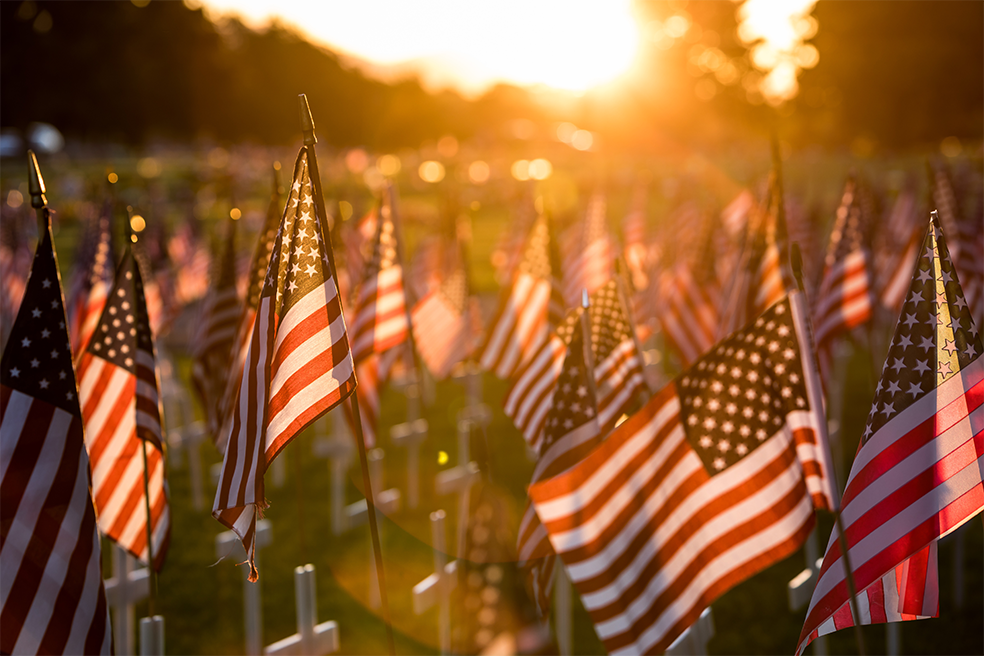
10
Memorial Day
The last Monday of May is traditionally celebrated in our country as Memorial Day. On this day, we remember American soldiers who died on various fronts in different parts of the world. Memorial Day is a federal holiday. Initially (officially since 1868 by order of General John Logan), Memorial Day was a celebration in memory of the soldiers who died in the Civil War. The holiday was supposed to be another step towards national reconciliation.
Until 1890, Memorial Day was celebrated practically in all Northern states. The nature of the holiday has changed after World War I to commemorate all Americans who have served the country. Despite the Federal Holiday Act of 1971, some Southern states continue celebrating other ceremonies to remember the fallen Confederate soldiers.
To remind Americans of the holiday’s meaning, a “National Moment of Remembrance” was adopted in 2000, which calls for all Americans to voluntarily and in their own way pause for a moment in reflection and silence, paying homage to and commemorating the fallen American soldiers in the service.

11
Father’s Day
Father’s Day is celebrated in the United States on the third Sunday of June. The year 2020 marked one hundred and ten years since the holiday was established. The father’s role has changed dramatically since then.
In 1910, Sonora Smart Dodd, a resident of the small town of Spokane, Washington, has launched an initiative to establish Father’s Day. After losing her mother, she attended a mass that honored the role of mothers in the family. She realized that none other than her father, William Smart, was now taking care of her and her six siblings. And while William Smart’s dedication to his children was unheard of at the time, today, it is not unusual. With social norms shifting and adjusting to current needs, fathers are not merely providers. According to reports by the US Census Bureau, men engage in daily activities with their children more often than ever before, sharing family responsibilities and being proactive in raising their offspring.
Father’s Day in the United States is celebrated in a similar fashion to Mother’s Day. Children look for ways to thank them for their care and constant presence. It’s a family holiday that brings people together.
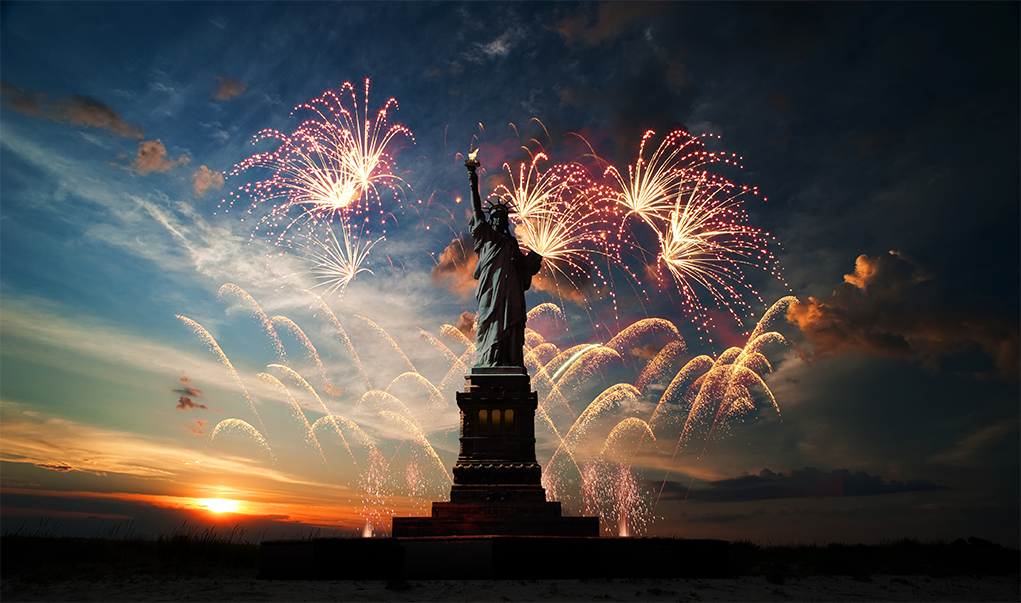
12
Independence Day
Independence Day is one of the most important holidays for Americans and one of the few with a fixed date - the 4th of July. Independence Day is celebrated in memory of the declaration of Independence on July 4, 1776. The official separation of the thirteen colonies from the British crown actually took place on July 2, 1776, but the Declaration was not accepted until July 4. Interestingly, both John Adams and Thomas Jefferson, the only US presidents who were also present at the signing of the constitution, died on the same day - July 4, 1826, the 50th anniversary of American independence. Another founding father, President James Monroe, also died on July 4, only five years later.
On this day, parades and firework shows are organized throughout the country. One of the longest-running marches in the United States is the Bristol Fourth of July Parade, held in Rhode Island. Bristol is a small town with a population of only 22,000, but due to the tradition of the Independence Day parade, it is called America’s most patriotic town.

13
Halloween
On October 31, all Americans celebrate Halloween. The history of Halloween goes back to Celtic and pagan traditions, and the name comes from All Hallow’s Eve. Everyone, big or small, dresses up as ghosts, monsters, celebrities, or movie characters. The most popular Halloween tradition is trick or treating. Disguised children go from house to house asking for candy. If they receive no sweets, they can play a trick on the hosts.
One of the symbols of Halloween is Jack-O’-Lantern, a Halloween lamp made of pumpkins. According to legend, an Irish man named Jack met the devil on his way and tricked him twice in exchange for not taking his soul after death. Eventually, Jack died and was not allowed to heaven because he was not a good man. When he went to Hell, the devil wouldn’t let him in either. Instead, he gave him burning charcoal that would light his way on the path through eternal darkness. Jack carved a lantern, and that’s how Jack-o’-lantern was created.
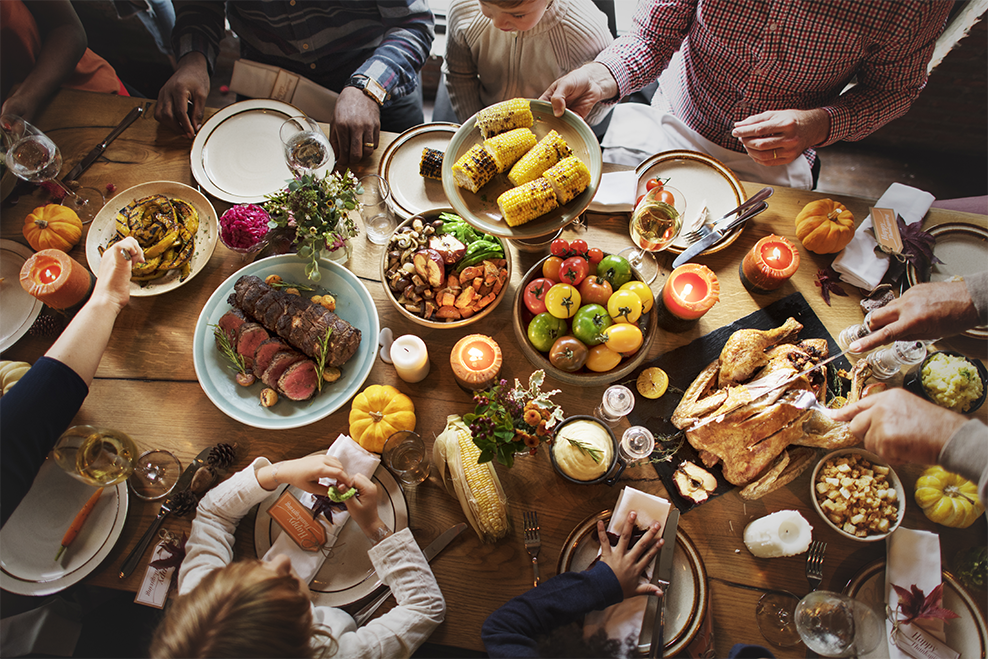
14
Thanksgiving
Thanksgiving is celebrated in both the United States and Canada. In Canada, Thanksgiving is associated with the events of 1578, when Martin Frobisher, an English explorer, tried to find a way to China but instead managed to establish a settlement in Canada.
The history of Thanksgiving in the United States dates back to 1621 when a group of English pilgrims celebrated the collections by feasting with the indigenous people of North America. The holiday is celebrated on the fourth Thursday of November. The traditional dishes on Thanksgiving include a roasted turkey, cranberry sauce, and pumpkin pie. There is no consensus on the date and place of the first Thanksgiving celebrations. Some believe that it happened in today’s St. Augustine, Florida, while others maintain that the first Thanksgiving Day was celebrated in the Plymouth colony in 1621.
The following Friday, Black Friday, all retail stores offer significant discounts, which often indicate the start of the holiday shopping season. Since times have changed and online retailers are more prominent than ever, Cyber Monday is designed to enhance the online shopping experience.

15
Christmas Day
Christian Americans - the overwhelming majority of the US population - celebrates Christmas in various ways, cultivating diverse Christmas traditions derived from their countries of origin. After all, the United States is a nation of immigrants.
Christmas is a hectic period of the year, with a magical vibe surrounding preparations, family gatherings, and gift shopping. Everyone receives gifts on Christmas Day, December 25th, brought by Santa Claus and his fellow raindeers. Carols are sung, households are decorated, and love is all around.
A small town in North Carolina, McAdenville that has just over six hundred inhabitants, turns into Christmas Town USA during this enchanting time of the year. The whole town is decorated with Christmas lights and ornaments, creating a beautiful unity and tradition. An estimated half a million lamps are used in the decorating process, not counting those on private properties. The tradition began in 1856 when the local company Pharr Yarns started contributing to electricity bills during the holiday season so that no one had to pay more to decorate the house for Christmas. About 600,000 people visit Christmas Town during the season. The first one thousand people who visit the town each day receive free hot chocolate and kettle corn.
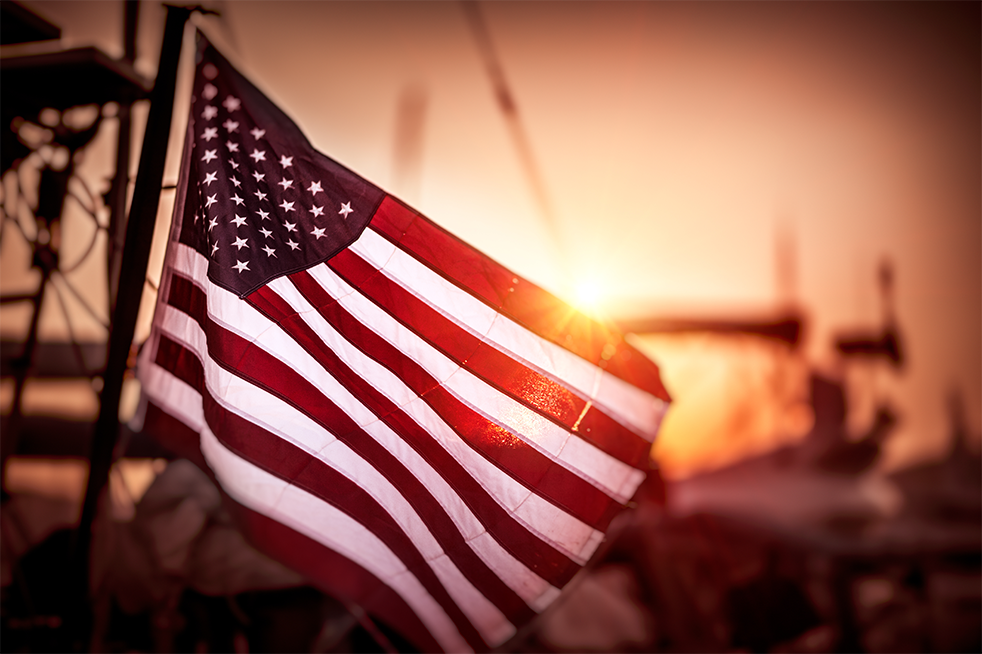
16
Labor Day
Labor Day, celebrated on the first Monday of September, became a public holiday in 1894 and was first celebrated on September 5, 1882, in New York thanks to the Central Labor Union. The members of the trade union wanted to have a feast in memory of the workers. Labor Day is unofficially considered the end of summer.
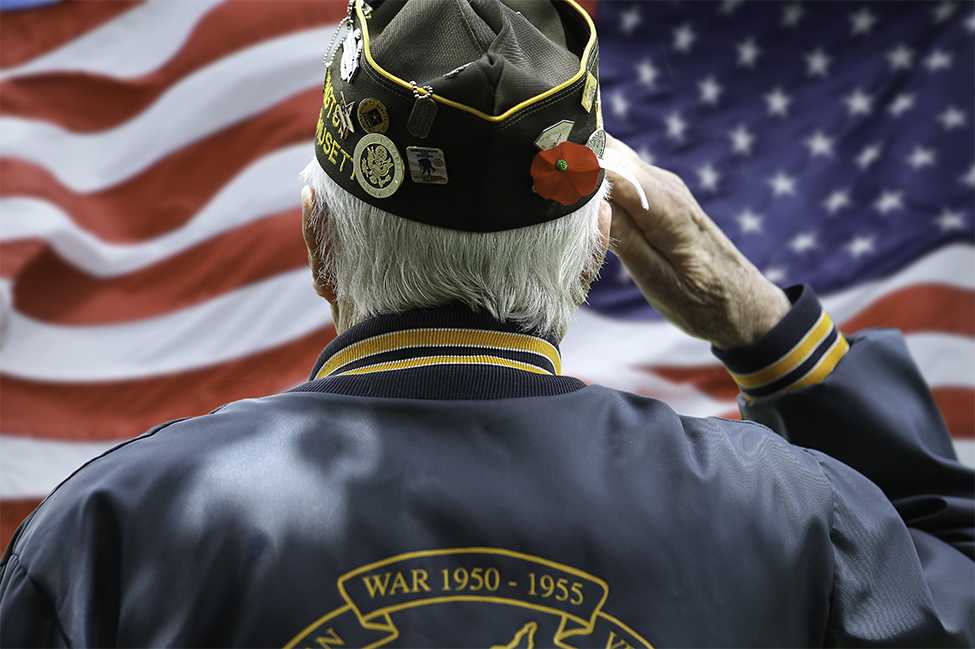
17
Veterans Day
Veterans Day celebrated on November 11, was established in 1919 by President Woodrow Wilson. Originally Armistice Day, the holiday was instituted to commemorate the end of World War I. In 1954, President Dwight Eisenhower made Veterans Day a national holiday. Its purpose is to pay tribute to the war veterans, thanking them for their service to the country. On this day, parades and public gatherings are held throughout the nation.
New York City is home to the largest Veterans Day parade, starting on Fifth Avenue. The event has been organized since 1919 and begins with the wreath-laying ceremony at Eternal Light Flagstaff, a monument in Madison Square Park commemorating the return of US soldiers to the country after World War I.
